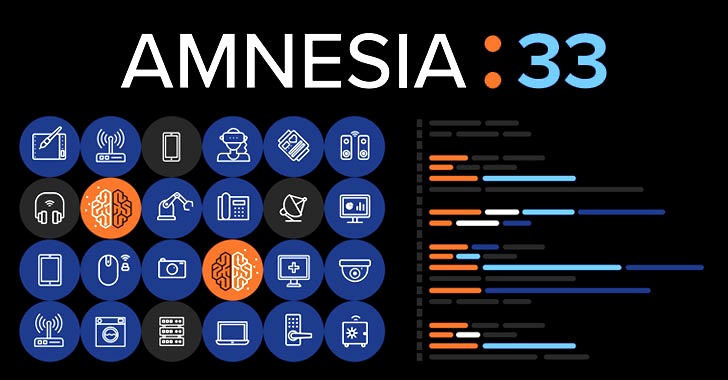1. EXECUTIVE SUMMARY
- CVSS v3 6.5
- ATTENTION: Exploitable remotely/low skill level to exploit
- Vendor: Siemens
- Equipment: ENTRON 3VA COM100/800, SENTRON 3VA DSP800, SENTRON PAC2200, SENTRON PAC3200T, SENTRON PAC3200, SENTRON PAC4200, SIRIUS 3RW5
- Vulnerability: Integer Overflow
2. UPDATE INFORMATION
This updated advisory is a follow-up to the advisory update titled ICSA-20-343-05 Siemens Embedded TCP/IP Stack Vulnerabilities–AMNESIA:33 (Update A) that was published February 9, 2021, to the ICS webpage on us-cert.cisa.gov.
3. RISK EVALUATION
Successful exploitation of this vulnerability could cause a denial-of-service condition.
4. TECHNICAL DETAILS
4.1 AFFECTED PRODUCTS
The following products are affected:
- SENTRON 3VA COM100/800: all versions prior to v4.2
- SENTRON 3VA DSP800: all versions prior to v2.0
- SENTRON PAC2200 (without MID Approval): all versions prior to v3.0.5
- SENTRON PAC3200: all versions prior to v2.4.5
- SENTRON PAC3200T: all versions prior to v3.0.5
- SENTRON PAC4200: all versions prior to v2.0.1
——— Begin Update B Part 1 of 2 ———
- SIRIUS 3RW5 communication module Modbus TCP: all versions prior to v1.1.1
——— End Update B Part 1 of 2 ———
4.2 VULNERABILITY OVERVIEW
4.2.1 INTEGER OVERFLOW CWE-190
An attacker located in the same network could trigger a denial-of-service condition on the device by sending a specially crafted IP packet.
CVE-2020-13988 has been assigned to this vulnerability. A CVSS v3 base score of 6.5 has been calculated; the CVSS vector string is (AV:A/AC:L/PR:N/UI:N/S:U/C:N/I:N/A:H).
4.3 BACKGROUND
- CRITICAL INFRASTRUCTURE SECTORS: Energy
- COUNTRIES/AREAS DEPLOYED: Worldwide
- COMPANY HEADQUARTERS LOCATION: Germany
4.4 RESEARCHER
Daniel dos Santos, Stanislav Dashevskyi, Jos Wetzels, and Amine Amri of Forescout Research Labs reported this vulnerability to CISA.
5. MITIGATIONS
Siemens recommends users upgrade affected products if upgrade are available for those products:
- SENTRON 3VA COM100/800: Update to v4.2 or later version
- SENTRON 3VA DSP800: Update to v2.0 or later version
- SENTRON PAC2200 (without MID Approval): Update to v3.0.5 or later version
- SENTRON PAC3200T: Update to v3.0.5 or later version (Contact Siemens customer support to receive the latest firmware version.)
- SENTRON PAC3200: Update to v2.4.5 or later version
- SENTRON PAC4200: Update to v2.0.1 or later version
——— Begin Update B Part 2 of 2 ———
- SIRIUS 3RW5 communication module Modbus TCP: Update to v1.1.1 or later version
——— End Update B Part 2 of 2 ———
As a general security measure, Siemens strongly recommends protecting network access to devices with appropriate mechanisms. In order to operate the devices in a protected IT environment, Siemens recommends configuring the environment according to Siemens’ operational guidelines for industrial security and following the recommendations in the product manuals.
Additional information on industrial security by Siemens can be found at: https://www.siemens.com/industrialsecurity
CISA recommends users take defensive measures to minimize the risk of exploitation of this vulnerability. Specifically, users should:
- Minimize network exposure for all control system devices and/or systems, and ensure they are not accessible from the Internet.
- Locate control system networks and remote devices behind firewalls, and isolate them from the business network.
- When remote access is required, use secure methods, such as Virtual Private Networks (VPNs), recognizing that VPNs may have vulnerabilities and should be updated to the most current version available. Also recognize that VPN is only as secure as the connected devices.
CISA reminds organizations to perform proper impact analysis and risk assessment prior to deploying defensive measures.
CISA also provides a section for control systems security recommended practices on the ICS webpage on us-cert.cisa.gov. Several recommended practices are available for reading and download, including Improving Industrial Control Systems Cybersecurity with Defense-in-Depth Strategies.
Additional mitigation guidance and recommended practices are publicly available on the ICS webpage on us-cert.cisa.gov in the Technical Information Paper, ICS-TIP-12-146-01B–Targeted Cyber Intrusion Detection and Mitigation Strategies.
Organizations observing any suspected malicious activity should follow their established internal procedures and report their findings to CISA for tracking and correlation against other incidents.
No known public exploits specifically target this vulnerability.
Source:


Stay connected